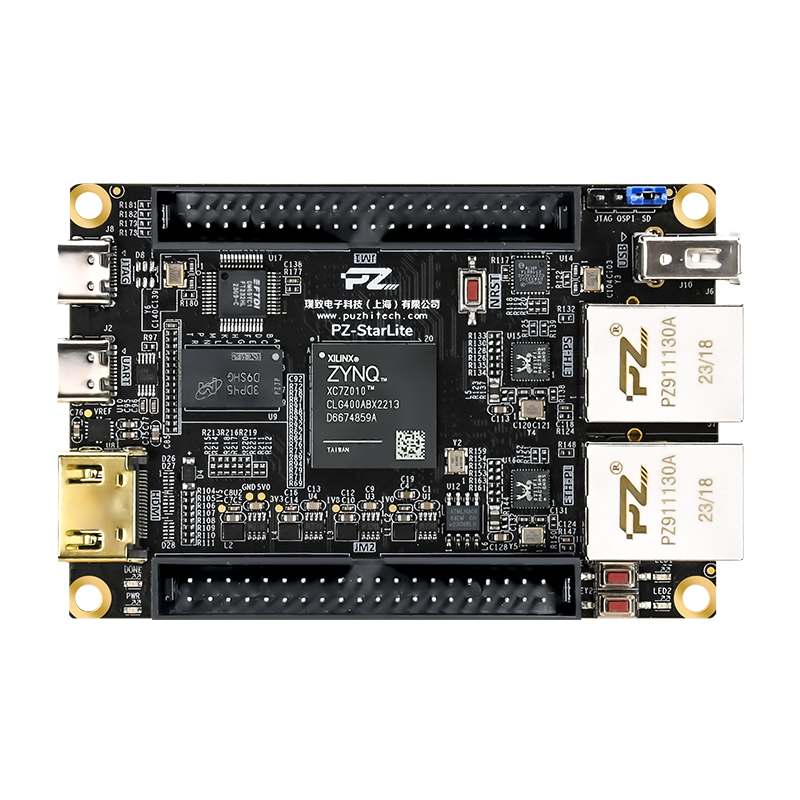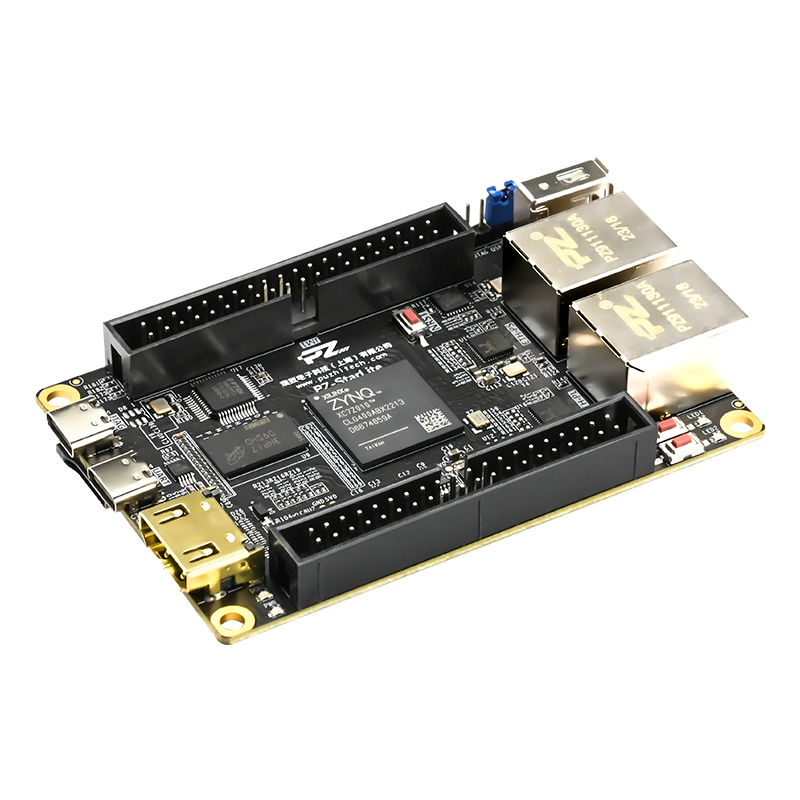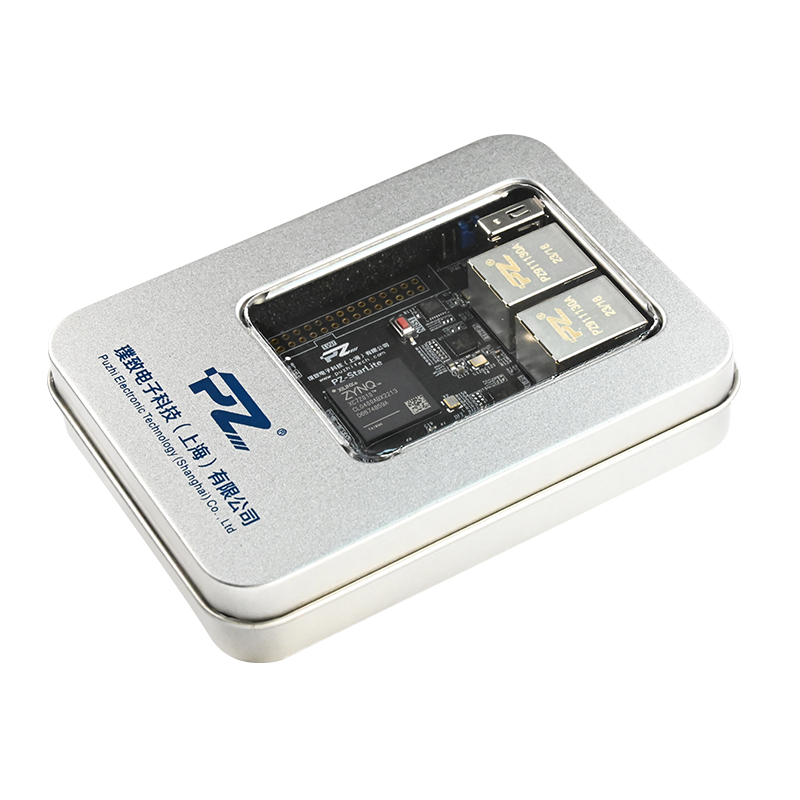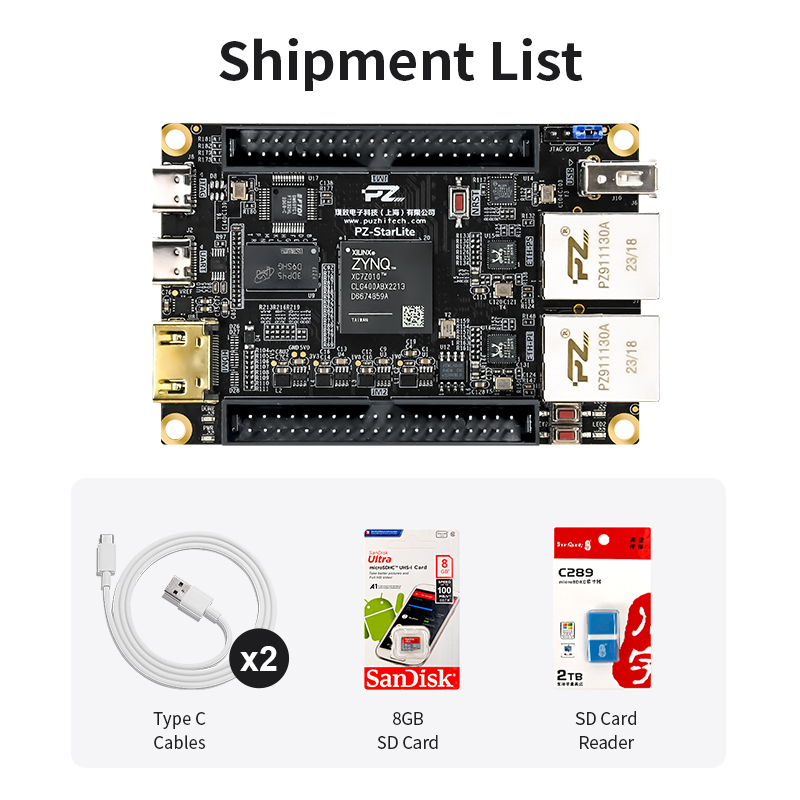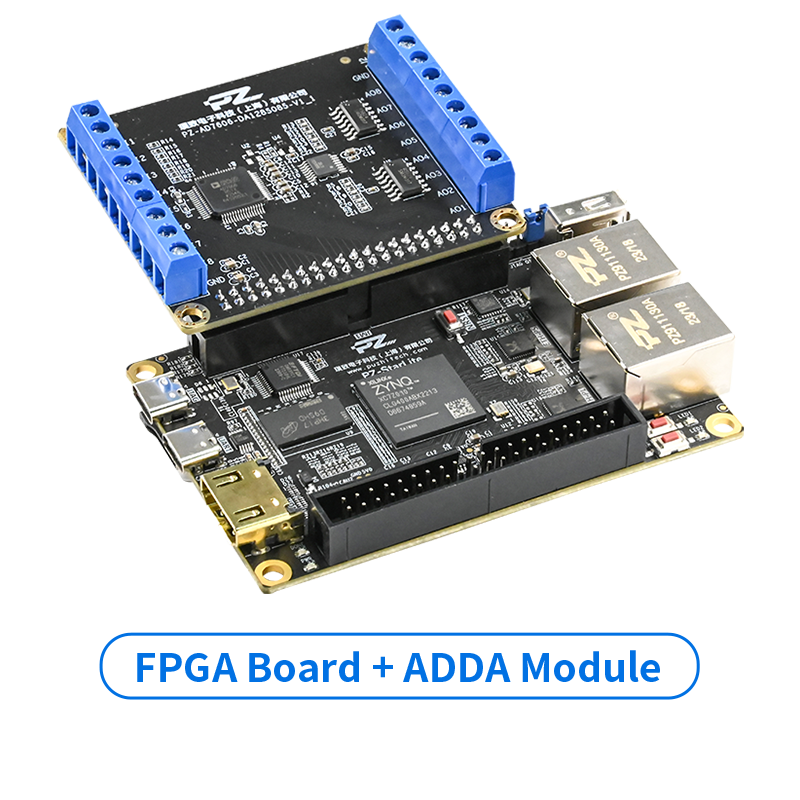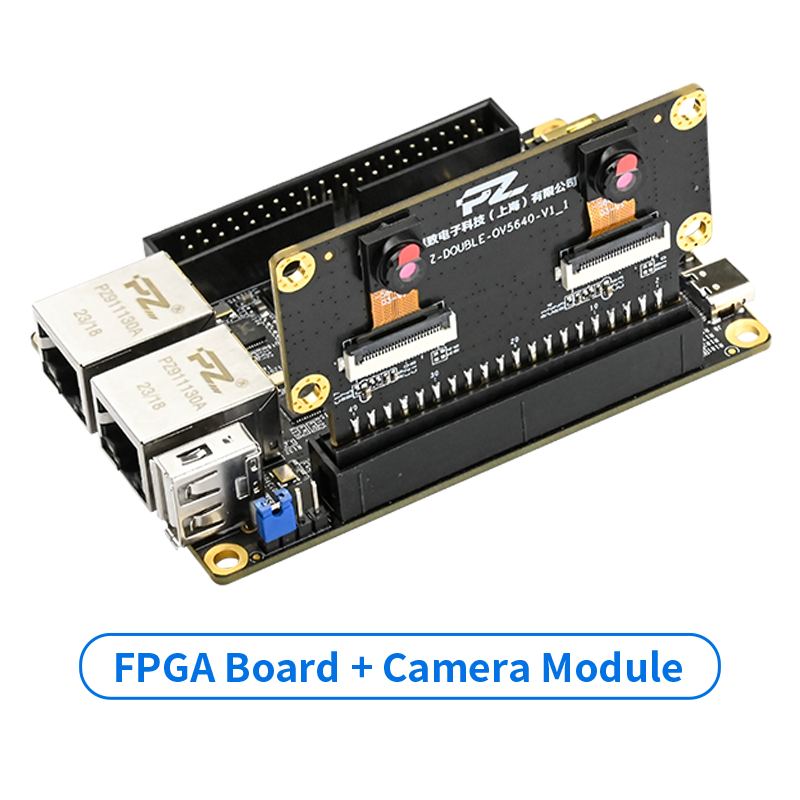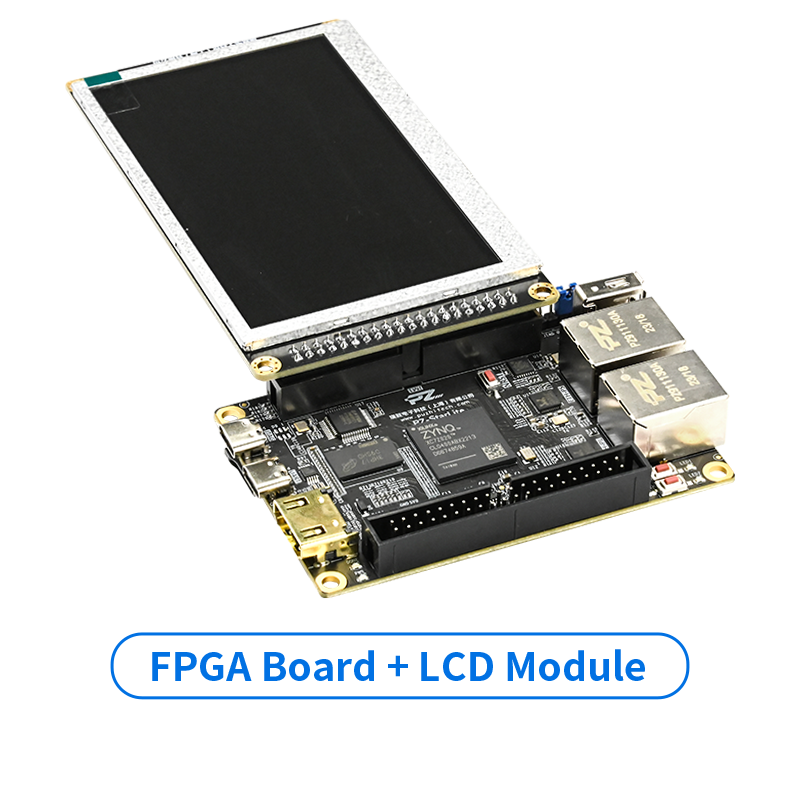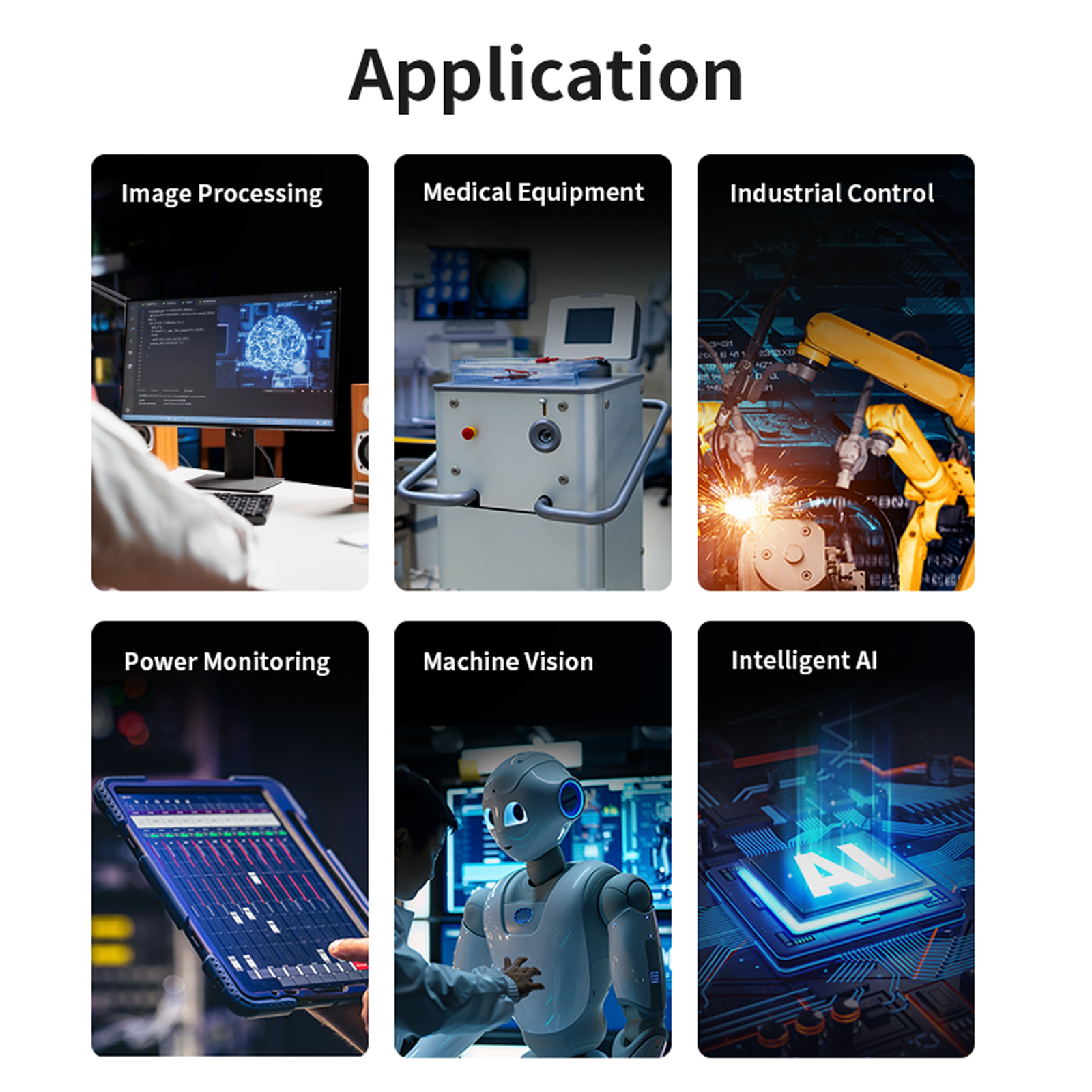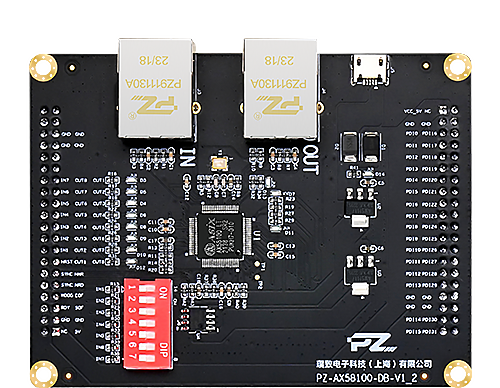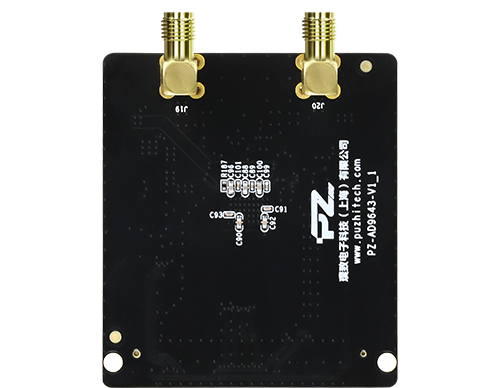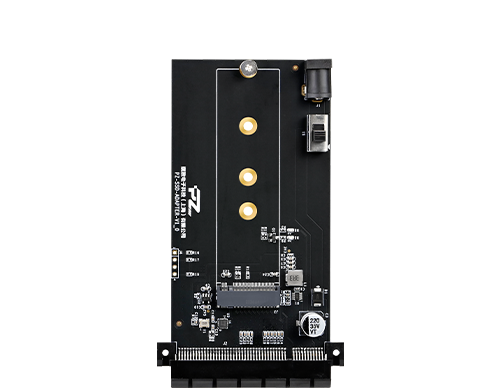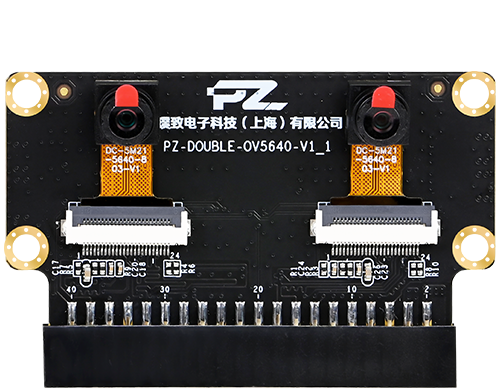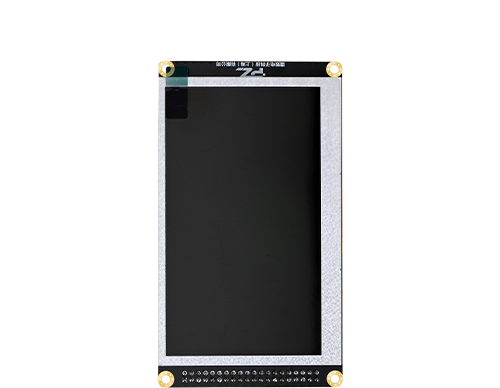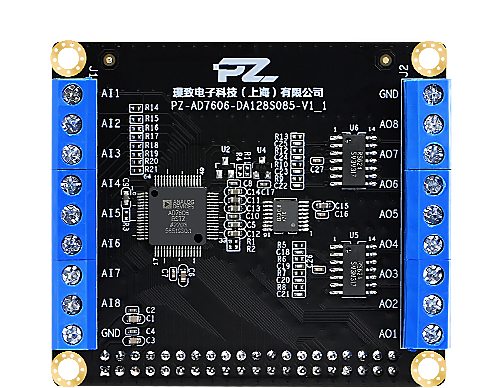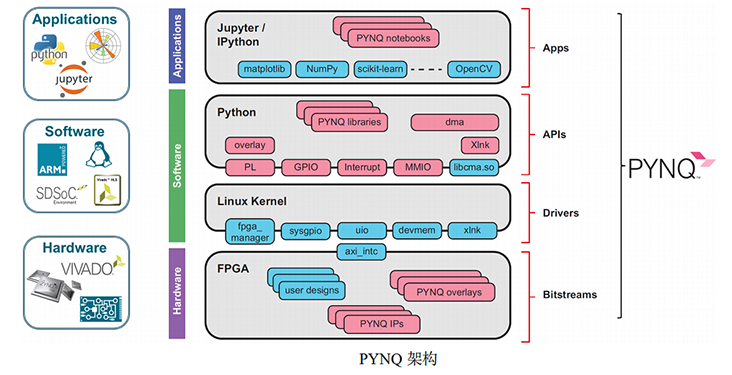
Home-
Product Center
Puzhi FPGA ZYNQ7000 PZ7010-StarLite Development Board
PZ7010-StarLite
- ARM+FPGA architecture,dual-core ARM Cortex-A9,main frequency 667Mhz
- Core parameters 512MB DDR3,128Mb QSPIFLASH
- Integrated development board,small and delicate,easy to hide in the palm
- Reserved ports JTAG、UART、Dual Gigabit Ethernet、HDMI、MIPI CSI,etc
- Support SDK development,support PYNQ,rich routines,help product development
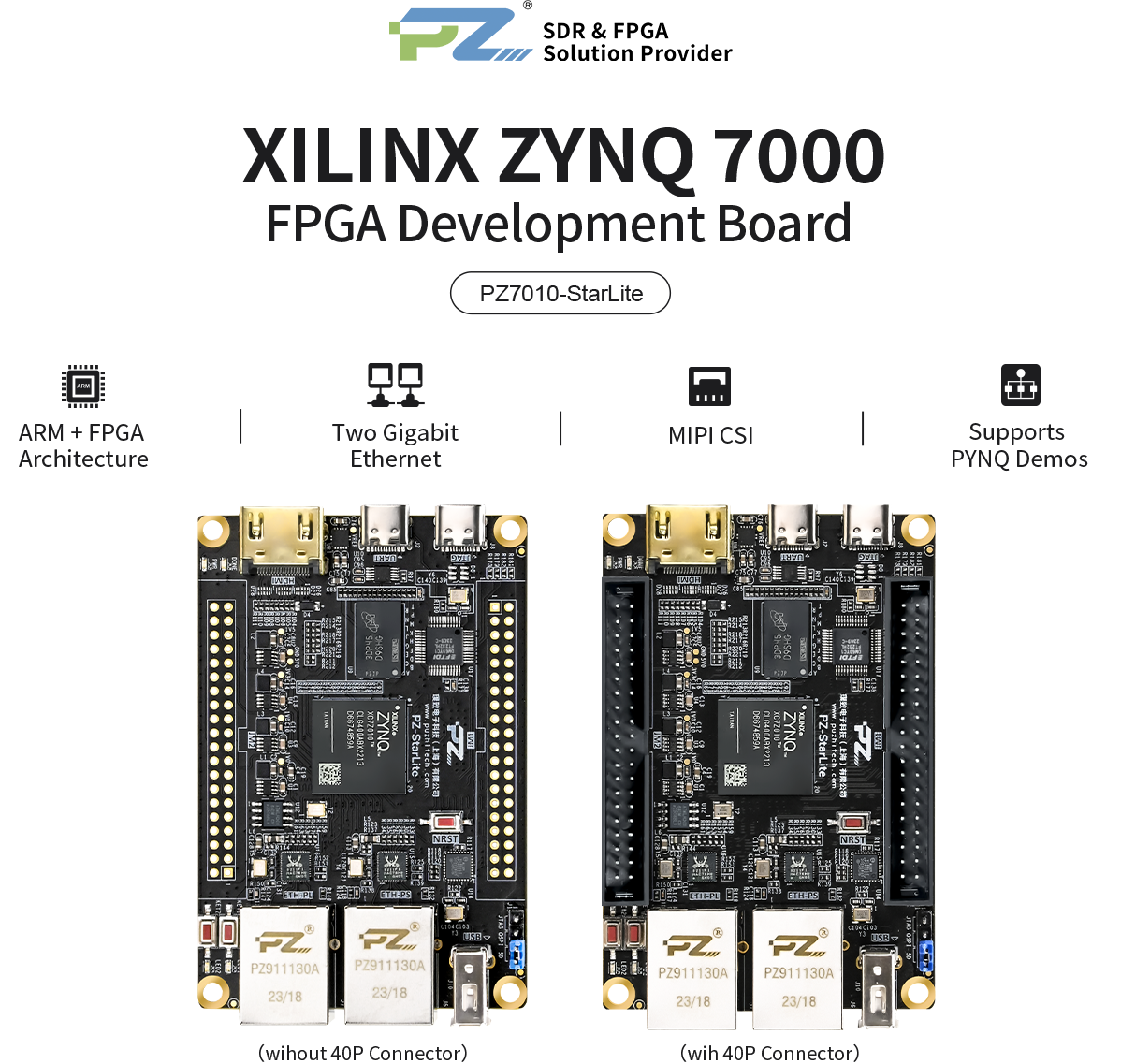
Interface Function Display

Product Parameters
FPGA Dev. Board Main Parameters
FPGA Dev. Board | PZ7010-StarLite |
FPGA Chip | XC7Z010-2CLG400I |
Logic Cells | 28K |
Main Frequency | 667MHz |
DDR3 | 512MB |
QSPI FLASH | 128Mb |
E2PROM | 64Kbit |
JTAG Interface | 1 |
UART | 1 |
SD Card Slot Interface | 1 |
USB2.0 Host | 1 |
Gigabit Ethernet | 1 on PS Side, 1 on PL Side |
HDMI | 1 HDMI Output |
LED | 2 LEDs |
KEY | 2 KEYs |
Voltage / Current | 5V/1A |
Board Form Factors | 3.54 inch x 2.36 inch (90 mm x 60mm) |
Technology | Black Matte. Immersion Gold Process |
40Pin Expansion Port | 64 Single-ended/32 Differential Pairs Reserve two 40-pin 0.1 inch Expansion Port,to Connect Puzhi Modules (AD/DA, Camera, LCD),Expansion Port including 5V power supply,3.3V power supply,,6 Ground, 32 IOs |
Product Dimensions

Product Packages
Other Subcard Display
Demos Come with the Board
Contact Customer Service after Purchase Files Saved in Google Drive/ Yandex/ Dropbox
Demos Constantly Being Updated... ...
- 1
FPGA Logic Demos
- 01.
Introduction to ZYNQ
- 02.
Introduction to FPGA Board
- 03.
Hardware Resources
- 04.
Vivado Environment Introduction and Installation
- 05.
LED Flashing
- 06.
Key Control LED Light
- 07.
Breathing Light Experiment
- 08.
IP core of MMCM/PLL Experiment
- 09.
IP core of RAM Experiment
- 10.
IP core FIFO Experiment
- 11.
UART Communication Experiment
- 12.
RGB-LCD Colour Bar Display
- 13.
RGB-LCD Character and Picture Display
- 14.
HDMI Colour Bar Display
- 15.
HDMI Square Moving Experiment
- 16.
EEPROM Read and Write Test Experiment
- 17.
Frequency Meter Experiment
- 18.
AD-AD7606 Signal Acquisition
- 19.
DA128S085 Output Experiment
- 20.
MDIO Interface Read and Write Test Experiment
- 21.
Ethernet UDP Test Experiment
- 22.
PL Ethernet Transmission Display Experiment Based on OV5640
- 01.
- 2
SDK Demos
- 01.
Hello World experiment
- 02.
GPIO of EMIO Key Control LED
- 03.
AXI GPIO Key Control LED
- 04.
Custom IP Core - Breathing Light
- 05.
Program Curing Experiment
- 06.
UART Serial Port Interrupt
- 07.
Timer interrupt experiment
- 08.
PS XADC Interface Experiment
- 09.
QSPI Flash Read and Write Test
- 10.
SD Card Read and Write TXT Text
- 11.
EMMC Read and Write Test
- 12.
Dual-core AMP Experiment
- 13.
PS and PL Data Interaction based on BRAM
- 14.
AXI DMA loop test
- 15.
PS drives LCD display via VDMA
- 16.
SD Card Read BMP Picture LCD Display
- 17.
SD Card Read BMP Picture HDMI Display
- 18.
OV5640 Camera LCD Display
- 19.
OV5640 Camera HDMI Display
- 20.
OV5640 Camera Greyscale Map Display
- 21.
OV5640-based Binarisation Experiment
- 22.
OV5640-based Median Filtering Experiment
- 23.
Binocular OV5640 Camera HDMI Display
- 24.
Binocular OV5640 Camera LCD Display
- 25.
MIPI-based OV5640 Camera HDMI Display
- 26.
LWIP-based echo server Experiment
- 27.
LWIP-based TCP Server Performance Testing
- 28.
LWIP-based tftp Server Experiment
- 29.
TCP Protocol-based Remote Update QSPI Flash Experiment
- 30.
UDP Protocol based on the Remote Update QSPI Flash Experiment
- 01.
- 3
Linux Demos
- 01.
PetaLinux Compile ZYNQ Image
- 02.
Character Device Driver Development
- 03.
Embedded Linux LED Driver Development Experiments
- 04.
New Character Device Driver
- 05.
Linux Device Tree
- 06.
LED Driving Experiment under Device Tree
- 07.
Introduction to the gpio Subsystem
- 08.
LED Driving Experiment under gpio Subsystem
- 09.
Linux Buzzer Driving Experiment
- 10.
Linux Concurrency and Competition
- 11.
Linux Concurrency and Competition
- 12.
Linux Key Input Experiment
- 13.
Linux Kernel Timer Experiment
- 14.
Linux Interrupt Experiment
- 15.
Linux Blocking and Non-blocking IO Experiment
- 16.
Asynchronous Notification
- 17.
Driver Static Compilation
- 18.
platform Device Driver Experiments
- 19.
Platform Driver Writing under Device Tree
- 20.
Linux Device Driver Framework for Getting Started with the LED
- 21.
Using AXI GPIO Experiments
- 22.
Linux misc Device Driver
- 23.
Linux Input Subsystem Experiment
- 24.
Linux 12C Bus Framework
- 25.
Use AXI IIC Experiment
- 26.
Linux SPI Bus Framework
- 27.
Uart Driver Experiment
- 28.
LCD Driver Experiment
- 29.
Watchdog Driver Experiment
- 30.
Linux USB Driver Experiment
- 31.
Linux Block Device Experiment
- 32.
Linux Network Device Experiment
- 01.
- 4
HLS Development Experiment
- 01.
Introduction to HLS
- 02.
LED Blinking Experiment
- 03.
Key Control LED Experiment
- 04.
Breathing Light Experiment
- 05.
Colour Bar Display Experiment
- 06.
OV5640 Camera Grey Scale Display
- 07.
OV5640 Camera Sobel Edge Detection
- 08.
Video Image Overlay based on OV5640
- 09.
OV5640-based Character based on OV5640
- 10.
Histogram Equalisation Experiment based on OV5640
- 11.
Adaptive Binarisation based on OV5640
- 12.
Straight line Detection Based on the Hough Transform
- 01.
- 5
Supports PYNQ

Standard Delivery List


Commerical Invoice
1.
Commercial Invoice Can be Provided for Customs Clearance and Company Financial Reimbursement.
2.
Please Contact with Customer Service and leave your Company Name, Address and Tax Code.

After-sale Service
1.
The Guarantee Period Amounts to one (1)Year after Delivery ofthe Products
2.
Be careful not to Connect the Wrong Power Supply, Pay Attention to Anti-static.
3.
Company Sourcing with Discount, Send Email for Quotation and Lead Time. Technical Email: support@puzhitech.com
4.
The Documents come with this products, saved in the Google Drive/Yandex/Dropbox Contact with Customer Service to Get it after Purchased.

Shipment
1.
DHL Shipment, it will take 3 to 5 Working Days on the Way DPEX/EMS/e-EMS/ Fedex lE/ Fedex IP/ SF Express/ UPS are Available
2.
Working Time: Monday to Friday, 9am to 6pm CsT.
Solution Display

Leave us a message
Puzhi focuses on SDR and ARM/FPGA technology solutions

